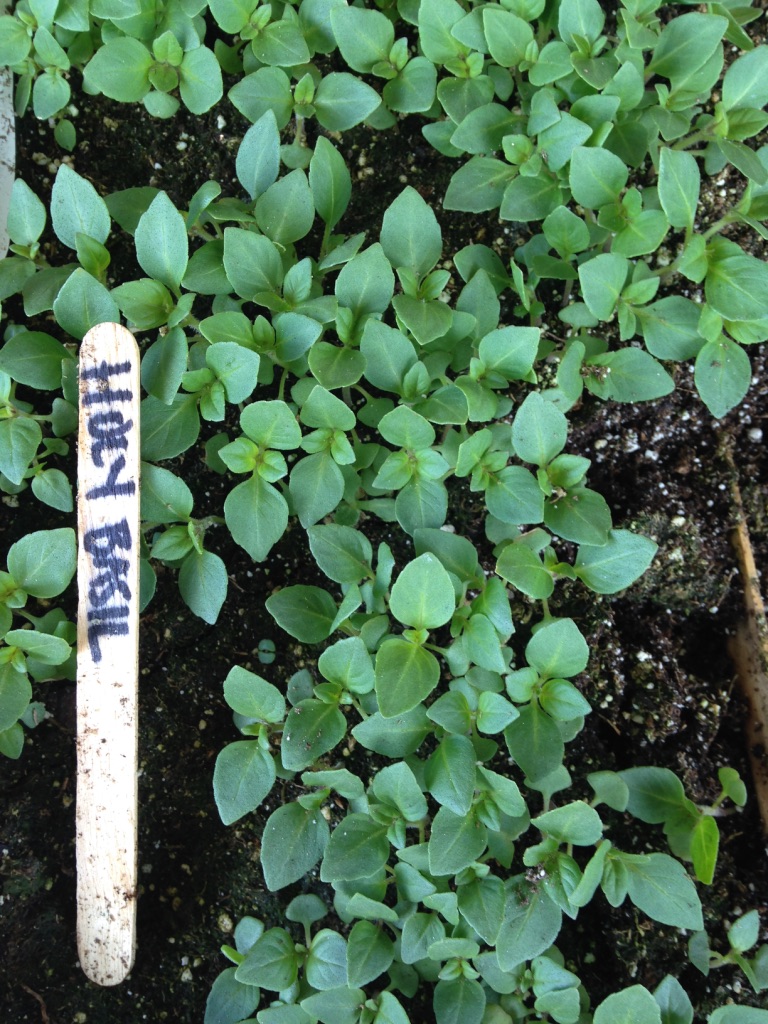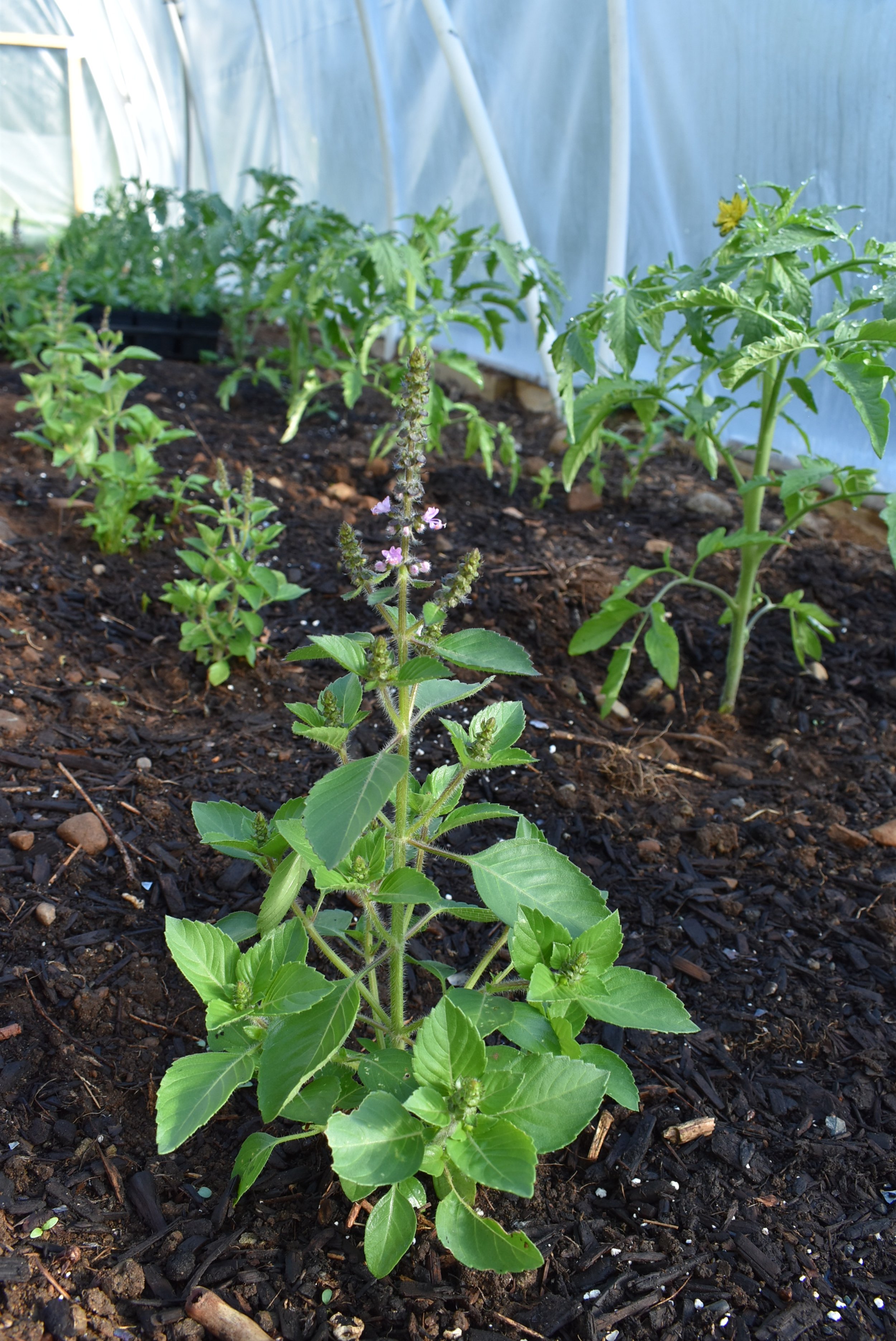Common Names
Holy Basil, Sacred Basil, Tulsi, Rama Tulsi
Botanical Name
Ocimum tenuiflorum (Syn Ocimum sanctum)
Plant Family
Lamiaceae
Life Cycle
Annual/Perennial
Native Range
India, and other parts of Asia.
Hardiness Zone
Perennial in zones 10-11. Grown as an annual in zones 2-9 or overwintered indoors.
Habit
Grows to from 8"-1ft tall and wide. Tidy mounding habit.
Sun/Soil
Full sun, well-drained fertile soil.
Germination/Sowing
The seeds germinate easily and quickly but require warmth, ideally a consistent temp around 20C. Bottom heat is helpful for speeding germination. The seeds can be started in flats in early spring (March-April), and potted up into fertile potting mix once they have gotten two sets of true leaves. The seedlings can be transplanted outside after all danger of frost has passed (May-June). If you get your plants in earlier enough you can harvest them twice before the end of the season.
Growing/Care
Holy Basil likes a warm, sunny spot with fertile soil and regular water. It does especially well in the hot and humid environment of the greenhouse, and planting it under cover will extend your harvest season by several weeks. It can also be grown outside easily, just make sure to harvest your plants, or bring them inside, before the cool nights begin. The plants are not frost hardy.
Harvesting
Harvesting is done by cutting the foliage, in flower, down to two inches above the ground. The plants will regrow rapidly and flower again for a second harvest during the warm months of July or August. I love harvesting the leaves and flowers a handful at a time too, as needed for a yummy relaxing summer evening tea.
Culinary Uses
The leaves and flowers are edible and are sometimes used in place of the culinary species of basil to make pesto or flavour dishes. The flowers can be added to salads.
Medicinal Uses
Holy Basil is regarded as an ‘elixir of life’ in Ayurvedic Medicine. The herb is used to promote longevity, and is considered a sacred plant in India. It acts as an adaptogen to help balance the body and mind in times of stress. It is calming and strengthening to the nerves, acting as a trophorestorative to the nervous system.
Holy Basil contains many of the same properties that other aromatic Mint Family plants are known for. The volatile oils in the herb are calming to digestive spasms, and are carminative to relieve gas and bloating. Holy Basil can be taken as a diaphoretic and antimicrobial to help ease symptoms of colds, flu, and fever. It is decongesting to the nasal passages and helps clear excess mucus from the lungs.
Both the oil applied topically, and the tea or tincture taken internally can help ease menstrual cramps, and help with symptoms of PMS such as bloating, irritability and other mood changes. It has a warm, circulating energy and helps with warming extremities and relieving cold hands and feet, which are often experienced as premenstrual symptoms.
Themes
Attracts Pollinators, Deer Resistant, Apothecary Garden, Container Garden.









